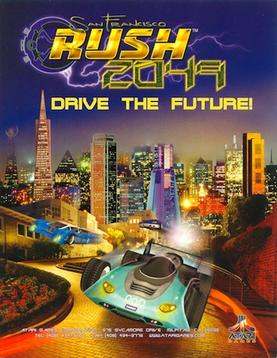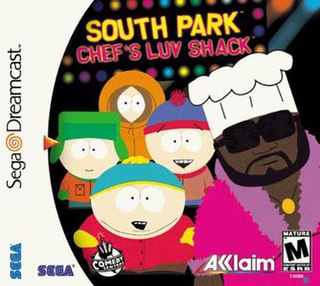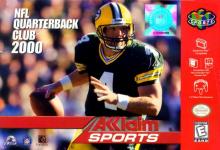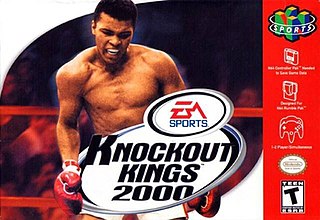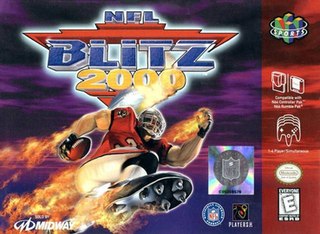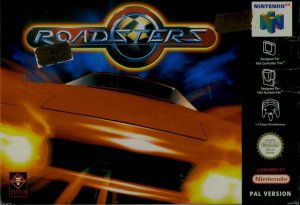Gameplay
The home console and computer version puts the player in control of Buzz Lightyear as he goes across fifteen levels (consisting of ten main levels and five boss levels) based on and inspired by locations from the film in order to rescue Woody. Buzz can attack enemies with a wrist laser, which can be charged up for additional power, and can also be aimed through a first-person viewpoint. Buzz also has a spin attack, which can be charged up into a continuous spin. Buzz is also able to extend his wings to perform a double jump, and can perform a foot stomp to activate switches. The player can pick up a laser power-up that gives Buzz a limited supply of powered up laser shots, as well as health-replenishing batteries and extra lives. [9] [10] [11] [12] [13] [4]
The main aim of the game is to collect Pizza Planet tokens which are located throughout stages. Each level has 5 Pizza Planet tokens, which are each collected by completing different objectives, such as fighting a mini-boss, solving a puzzle for getting a secret token, completing a timed challenge or winning a race against another character, or helping a character find 5 of a certain object which are hidden throughout a level. Each level also has a number of coins placed throughout it, 50 of which can be collected and given to Hamm for a token. Certain objectives require the use of a special power-up that must first be unlocked in a certain level by retrieving one of Mr. Potato Head's missing body parts. Power-ups include a barrier that protects Buzz from damage, rocket boots that launch him at high speeds, a disk launcher that homes in on enemies, a grappling hook for climbing up high ledges, and hover boots for floating up to high places. While only one Pizza Planet token is needed to clear a level, some levels require a certain number of tokens to unlock. [9] [14] [11] [13] [4] With the exception of the Nintendo 64 version, progressing through each level unlocks FMV clips of scenes taken from the film. [15] [16] [17] The Nintendo 64 version instead features screenshots from the film accompanied by text, shown in between levels, due to storage limitations of the Nintendo 64 cartridge. [9] [18]
Development and release
In July 1998, Activision licensed the rights to create a video game based on Toy Story 2. [19] The game was developed by Traveller's Tales and published by Activision. [16] [8] Traveller's Tales had previously developed the original Toy Story video game. [16] The home console versions were released as Toy Story 2: Buzz Lightyear to the Rescue!, while versions for Microsoft Windows and Macintosh were released under the title Disney/Pixar's Action Game, Toy Story 2. [20]
Development had been underway for some time as of March 1999. [21] The PlayStation and Nintendo 64 versions were unveiled at the Electronic Entertainment Expo in May 1999. [22] In the United States, the game was released for PlayStation, Nintendo 64, Windows, and Macintosh in November 1999, coinciding with the film's theatrical release. [23] [5] [20] [24] In Europe, the PlayStation and Nintendo 64 versions were released on 4 February 2000. [6]
Activision also released a Dreamcast version. [25] [26] This version was delayed and ultimately released in the U.S. in July 2000. [27] [8] It is a port of the PlayStation version, [28] and was also developed by Traveller's Tales and published by Activision. [8]
In March 2011, Toy Story 2: Buzz Lightyear to the Rescue! was re-released through the PlayStation Network as a PS one Classic, available for download on PlayStation 3 and PlayStation Portable consoles. [29] [30] In August 2012, it received a downloadable re-release for PlayStation Vita through the European PlayStation Store, [31] while a U.S. Vita re-release followed in January 2013. [32] In Asia, it was re-released in May 2022, as a downloadable game for PlayStation 4 and PlayStation 5, via the PlayStation Plus service. [33]
Following its initial release, the game created controversy for its inclusion of a villain character whose design featured a mustache, a bullet bandolier and a sombrero. In late November 1999, a peaceful protest with more than 120 people was held outside Activision's headquarters by Mestizo activists who perceived the character as an offensive stereotype towards Mexicans. [34] [35] Activision and Disney stated that the character's appearance would be altered in future copies of the game; there were no plans to recall or amend current copies. [34] [35] [36]
Reception
The PlayStation version of Toy Story 2: Buzz Lightyear to the Rescue! received positive reviews, while the Nintendo 64 and Dreamcast versions received "Mixed or average reviews", according to aggregating review website Metacritic. [37] [38] [39] Nintendo Official Magazine , reviewing the Nintendo 64 release, called it "a smart platformer that's packed with wacky worlds and cool bosses", but also stated its low difficulty level may deter experienced gamers of the platform genre. [62]
The home console/computer version was criticized for its awkward camera, [52] [16] [63] [58] [56] [57] [10] [18] [14] [12] [46] [59] and the limited number of repetitive phrases used by non-playable characters throughout the game. [15] [63] [9] [18] [14] [10] [12] Critics praised the PlayStation version for its graphics and FMV clips, and considered it superior to the Nintendo 64 version, noting its lack of clips. [52] [49] [10] [11] [18] [14] Levi Buchanan of GameFan called the PlayStation version "a wonderfully detailed" game with "bright, crisp graphics, incredible audio, and some fantastic movie cutscenes". Buchanan criticized the Nintendo 64 version for blurry textures and "abysmal" pop-up, and stated that the frame rate affected character animations. In addition, Buchanan criticized the Nintendo 64 version's sounds, music, and sluggish camera, and stated that the poor graphics hindered the gameplay. [52] Nintendo Official Magazine appreciated the Nintendo 64 release's upbeat music, vibrant color palette of the levels as well as the "smart" boss design, but admitted the graphics looked "grainy" in some areas. [62] Matt Casamassina of IGN also criticized the Nintendo 64 version's pop-up and frame rate, and stated that the game had "washed out visuals and a decidedly blurry look" in comparison to the PlayStation version; he believed that the latter version also had superior controls. [11] Chris Hudak of The Electric Playground praised the game's large levels but criticized them for not being interactive enough. [47] John Marrin of CNET Gamecenter called the PlayStation version "a good 3D platformer that could have been better. Although I liked the inventive level design, and the cut scenes from the film add a bit of immersion to the game, there are some very real hang-ups in the game's obstacle courses. Still, there's some fun to be had here, and fans of the Toy Story films will enjoy playing around with Buzz Lightyear." [43] Later, however, in his review of the Nintendo 64 version, Tom Ham concluded, "The bottom line is this: if you're looking for a good representation of the Toy Story 2 movie, you're better off with the PlayStation version of the game. And if you're adamant about getting a Nintendo 64 3D platform game, there are plenty of other quality choices available." [41] Dr. Zombie of GamePro , however, gave the N64 and PlayStation version each a positive review, first saying of the latter, "Ultimately, the depth of each level and the variety of challenges keep this game from becoming monotonous or another pedestrian movie tie-in. Toy Story 2 benefits from its high-profile license, but stands on its own merits as an entertaining platform game"; [64] and later saying of the former, "Although TS2 is not complex, it delivers enough gameplay, challenges, and puzzles to entertain even skilled gamers. Kids may be attracted to the commercial tie-in, but gamers will be attracted to the fun." [65] [lower-alpha 4]
Critics for Game Informer reviewed the PlayStation version and praised the FMV cutscenes and levels, but criticism was directed at the repetitive gameplay. [16] Game Informer praised the "enjoyable" gameplay of the Nintendo 64 version, but also considered it to be monotonous and too easy, while criticizing the lack of cutscenes. [49] AllGame 's Brett Alan Weiss gave the PlayStation version three-and-a-half stars out of five, praising it for the camera, controls, level design, and the cutscenes, and stated that the character voices, "though redundant, are a plus". However, he considered the game too easy for hardcore gamers. [66] Glenn Wigmore of AllGame also gave the Nintendo 64 version three-and-a-half stars out of five and praised it for its graphics, sound effects, and control, but was critical of the game's music, considering it to be repetitive. [9] N64 Magazine gave the same console version 71% in two separate reviews, with Jes Bickham saying of the U.S. import, "It's probably more suited to the younger player, but Toy Story 2 is still a sweet little surprise" (#37, January 2000); [67] and Tim Weaver later saying of the game in its verdict, "Likeable and imaginative, Toy Story 2 ranks along the ranks of Rayman 2 and 40 Winks as a solid, hard-working 3D adventure. Shame about the shocking PAL conversion, mind" (#39, March 2000). [68]
The Dreamcast version was criticized for its difficult controls, [15] [63] [69] [59] including the overly sensitive analog stick, making it difficult to move Buzz in a straight line. [56] [57] Miguel Lopez of GameSpot believed the Dreamcast version had "cleaner-looking" FMV clips but was disappointed that it was essentially the same game as the Nintendo 64 and PlayStation versions, [56] while IGN's Jeremy Dunham believed that the Dreamcast version had better graphics than the previous versions. [57] 2 Barrel Fugue of GamePro criticized the Dreamcast version for its graphics and monotonous music. [63] [lower-alpha 5] Jeremy Bell of AllGame gave the same console version one-and-a-half stars out of five, calling it a "generic-looking dud" and considering the cutscenes to be the game's only "quality graphics". Bell criticized the game graphics for monotonous scenery and bland surface textures and stated that the game had low resolution considering it was developed for the Dreamcast. Bell also criticized the unoriginal gameplay. [15] PlanetDreamcast praised the game's film clips, but criticized its VMU interface, and stated that the game would only appeal to young children. [12] Greg Orlando of NextGen called the Dreamcast version a "shoddy port" with graphics "barely better" than the PlayStation version, [59] while Shaun Conlin of The Electric Playground called it "a port of a game that wasn't very good in the first place". [46] The only positive review came from Scott Steinberg of CNET Gamecenter, who wrote, "Marred by a dodgy interface, Toy Story 2 nonetheless knows how to flex its might like a championship weightlifter. Candy-coated, addictive platform escapades for both kids and grownups are the return on your investment. Especially when weighed against the cost of movie tickets for a family of four, this disc comes out smelling like a rose." [40]
Noah Robischon of Entertainment Weekly criticized the Windows version for installation problems. [20] PC Zone wrote that while the game did not reinvigorate the platform genre, it was "definitely a cut above most merchandising tie-ins". [17] Peyton Gaudiosi of CNET Gamecenter wrote that the same PC version, "with all its gadgets and gizmos, is all about fun, and with some patience on your part, this game will deliver on that score. It may not be worth a second replay, but this game has enough packed into it to make it worth a first adventure." [42] Cathy Lu of MacADDICT reviewed the Macintosh version and considered it to be addictive. Lu praised the graphics but criticized clipping problems and the jerky camera, as well as high system requirements to play the game. [58]
It was among the top 10 best-selling PlayStation games of December 1999. [70] The PlayStation version received a "Gold" sales award from the Entertainment and Leisure Software Publishers Association (ELSPA), [71] indicating sales of at least 200,000 units in the UK. [72] During the 3rd Annual Interactive Achievement Awards, the Academy of Interactive Arts & Sciences nominated Toy Story 2 for the "Console Children's/Family Title of the Year" award. [73]



